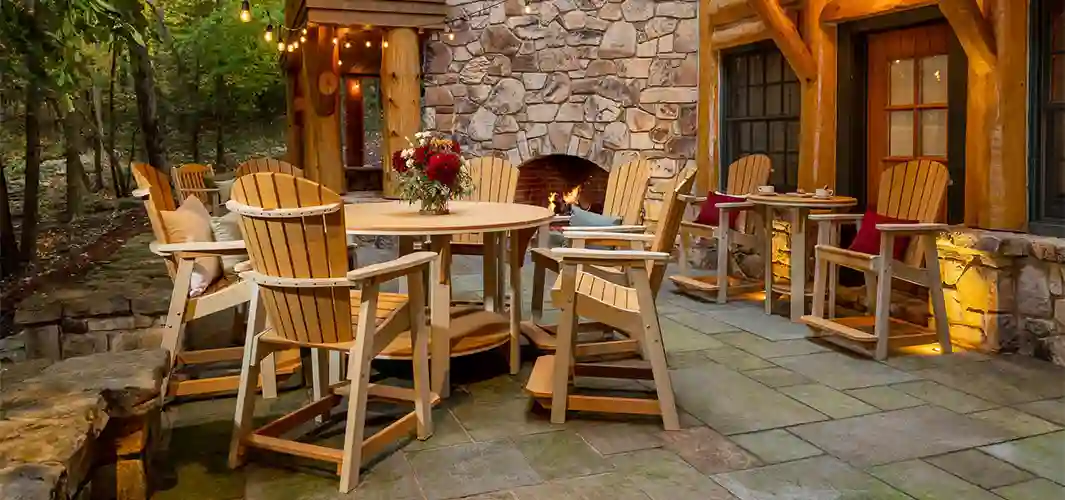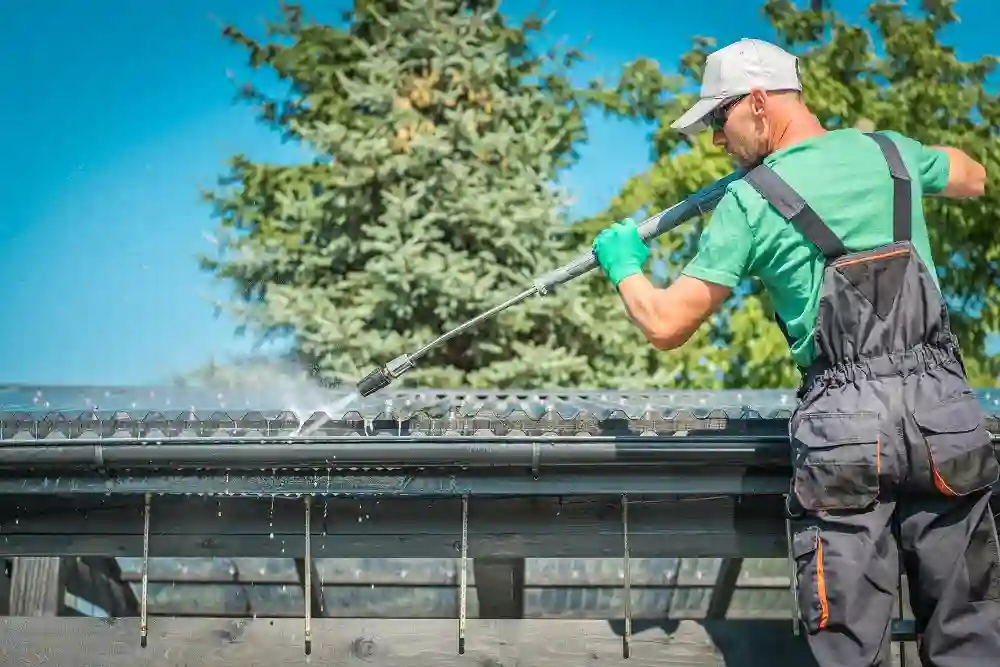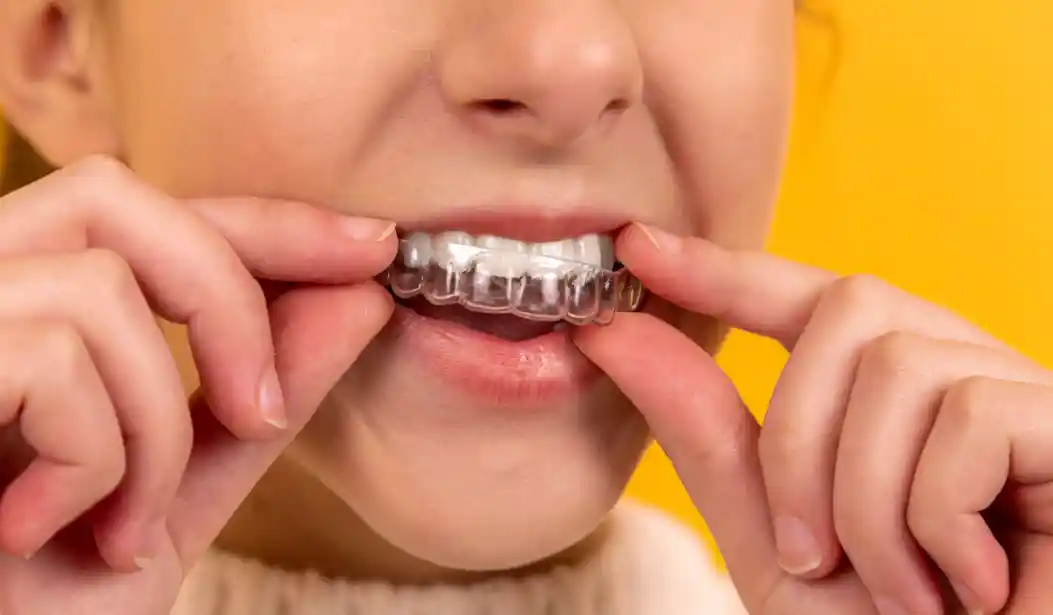Home & Garden
The Perfect Patio: How to Pair Restaurant Furniture with Your Garden for a Functional and Beautiful Outdoor Dining Space

1. Choosing the Right Restaurant Furniture
When selecting restaurant furniture for your garden patio, it’s essential to consider both material and durability. Different materials such as metal, wood, wicker, and plastic each have their advantages and can significantly influence the atmosphere of your space. Metal can provide a sleek, modern look, while wood gives a more natural and rustic vibe. Wicker and plastic are lightweight, versatile, and often weather-resistant, making them popular choices.Material and Durability
Metal furniture is known for its durability and ability to withstand various weather conditions, making it a good option for year-round outdoor use. However, it may require occasional maintenance to prevent rust, depending on the type of metal. Aluminum is a popular choice due to its rust-resistant properties and lightweight design, making it easy to move around. Steel, on the other hand, is heavier and provides a sturdy, industrial look but may need protective coatings to maintain its appearance. Wooden furniture brings a warm and natural aesthetic to your patio, blending seamlessly with garden elements. Teak is a favorite due to its resistance to moisture and pests, but it requires periodic oiling to retain its color. Other hardwoods like eucalyptus or acacia are also good options for outdoor use, though they may need more care. If you prefer a low-maintenance option, consider treated or painted wood that can withstand the elements. Wicker and rattan furniture, often made from synthetic materials, provides a classic, cozy look that is perfect for relaxed outdoor settings. These materials are generally weather-resistant and easy to clean, making them ideal for use in gardens with varying climates. Plastic furniture, while less sophisticated, is lightweight, durable, and available in a range of styles and colors, making it easy to match with any garden decor.Style and Aesthetics
The style and aesthetic of the furniture should match your garden’s character. For example, a rustic wooden table complements a garden full of wildflowers, whereas a minimalist metal dining set might be a better fit for a contemporary landscape. Mixing and matching different furniture styles can also create an eclectic, dynamic look that reflects your personal taste. Consider incorporating vintage or repurposed pieces to add character and charm to your garden patio.Comfort Considerations
Comfort should be a priority—consider cushions, fabrics, and seating types to make your outdoor area inviting and comfortable. Cushions made from weather-resistant fabrics like acrylic or polyester are ideal for outdoor use, as they resist fading and mildew. Opt for plush cushions with removable covers for easy cleaning and maintenance. High-backed chairs, lounge chairs, and sofas can add an extra level of comfort, allowing you and your guests to relax in style. Don’t forget to add throw pillows and blankets for a cozy touch, especially during cooler evenings.2. Blending Furniture with Garden Elements
The key to creating a harmonious garden dining area is integrating your furniture seamlessly with the natural environment. Consider the colors and textures of your garden—coordinate furniture colors with the hues of your flowers and greenery to establish a balanced look. Using natural materials like wood or wicker can help unify the furniture with the garden, creating a sense of oneness with nature.Color and Texture Harmony
To achieve a cohesive look, choose colors that complement your garden’s natural palette. Earthy tones like browns, greens, and neutrals can help create a calming atmosphere, while brighter colors like blues, yellows, or reds can add a lively and vibrant touch. If your garden features a lot of greenery, consider furniture with contrasting colors to make it stand out, or opt for neutral shades that blend in harmoniously. Texture is another important aspect—combine smooth surfaces like metal or glass with softer, natural textures like wood or wicker for a well-balanced and visually interesting space.Using Natural Materials
Incorporating natural materials such as wood, stone, and plants into your patio design helps to create a seamless transition between the garden and the dining area. Wooden furniture with a natural finish can blend beautifully with trees, shrubs, and flower beds, while stone accents like pavers or gravel pathways can add texture and define the space. Potted plants and hanging baskets placed around the dining area can help soften the look of the furniture and enhance the garden feel.3. Accessories and Enhancements for the Dining Experience
Accessories can significantly enhance your outdoor dining experience. Adding shade elements like umbrellas, pergolas, or canopies can offer comfort on sunny days and a cozy atmosphere in the evening. Lighting is also crucial; string lights, lanterns, or solar garden lights can add warmth and magic to your patio after dark.Adding Shade Elements
Providing shade is essential for ensuring comfort during the hotter months. Pergolas covered with climbing plants like ivy or wisteria can create a natural, shaded area that feels like an extension of the garden. Umbrellas are a versatile and practical option, available in various sizes and colors to match your furniture. For a more permanent solution, consider installing a retractable canopy or sail shade, which can be adjusted based on the time of day or weather conditions.Lighting and Decor
Lighting plays a crucial role in setting the mood for your outdoor dining space. String lights draped over pergolas or between trees can create a warm, inviting ambiance, perfect for evening gatherings. Solar-powered lanterns or LED candles can be placed on tables or along pathways to add a soft, flickering glow. For a more dramatic effect, consider installing spotlights to highlight specific garden features, such as a beautiful tree or water fountain.Functional Accents
Functional accents like table settings, potted plants, and raised garden beds also enhance the overall ambiance. Adding a decorative table runner, placemats, and outdoor-friendly dinnerware can make your dining area feel more sophisticated and complete. Potted plants, herbs, and flowers placed around the dining area can add color and fragrance, making the space feel vibrant and alive. Raised garden beds can also be used to grow herbs and vegetables, adding a practical element to your garden while enhancing the dining experience.4. Designing for Versatility and Comfort
To make the most of your outdoor area, consider multi-functional furniture. Pieces that can be used in different ways or stacked and stored when not in use add versatility to your patio setup. Arranging your furniture to create an optimal flow ensures everyone can move comfortably throughout the space, enhancing usability and enjoyment.Multi-Functional Furniture
Multi-functional furniture is key to maximizing space, especially in smaller gardens. Stackable chairs, folding tables, and modular seating can be easily rearranged or stored away when not in use, providing flexibility for different occasions. Benches with built-in storage are another great option, allowing you to keep cushions, blankets, or outdoor games neatly tucked away while also providing additional seating.Arranging Furniture for Optimal Flow
The arrangement of your furniture should facilitate movement and create a welcoming atmosphere. Ensure there is enough space for guests to move comfortably between seating areas, and avoid overcrowding the patio with too much furniture. Creating distinct zones—such as a dining area, a lounging area, and a space for cooking or barbecuing—can help make the patio feel organized and functional. Use rugs, planters, or low garden walls to define these different areas while maintaining an open feel.Transitioning from Day to Night
Consider how your patio can transition from day to night. During the day, it may be a peaceful spot for relaxation, and in the evening, it can become the center for social gatherings. Adding comfortable seating with cushions, soft blankets, and warm lighting can create an inviting atmosphere that encourages guests to linger. A fire pit or outdoor heater can also be a great addition, providing warmth and a focal point for evening gatherings.Crafting Your Garden Oasis: The Final Touch
The perfect patio is all about thoughtfully blending restaurant-quality furniture with the natural elements of your garden. By choosing the right materials, colors, and accessories, you can create an outdoor dining space that’s both functional and visually captivating. Whether it’s a cozy nook for quiet mornings or a lively spot for entertaining friends, your garden patio should reflect your personal style and needs. To make your patio truly unique, incorporate personal touches like handmade decor, family heirlooms, or items collected during travels. These details can make the space feel special and tell a story, adding depth and personality. Remember, the goal is to create an environment where you feel comfortable and inspired—a place where you can make memories with loved ones. Now is the time to transform your outdoor area into a space that’s uniquely yours, providing the ideal setting for memorable dining experiences and peaceful moments alike. With careful planning and attention to detail, you can craft a garden oasis that serves as an extension of your home, offering beauty, comfort, and functionality for years to come.Read More latest Posts
Home & Garden
Affordable, Safe Propane Delivery with Timely Service

Looking for a propane service that is safe and affordable? Running out of propane can be a hassle. A reliable delivery service keeps your home or business running smoothly. Safe handling ensures no risks or delays.
Affordable pricing helps you save money. Timely service means you never have to wait too long. The right provider makes everything easy and stress-free. Want to know how to get the best propane delivery? Keep reading to learn more!
Reliable Propane Delivery
Reliable propane delivery ensures you never run out of fuel. It keeps homes warm and businesses running smoothly. A good provider delivers on time without delays. Safe handling prevents leaks and other risks.
Regular propane supply helps avoid last-minute emergencies. Affordable pricing makes it a cost-effective choice. Customers can schedule deliveries for added convenience. Timely service means you always have fuel when needed. Choosing a trusted propane provider makes life easier.
Safe and Secure Service
Safe and secure service means getting what you need without worry. Reliable companies follow strict safety rules to protect customers. They use trained professionals and quality equipment to handle every delivery with care.
Services like propane delivery in Pennsylvania and Delaware ensure fuel arrives safely and on time . Safety checks and proper handling prevent leaks and accidents.
Customers can trust that their orders will be delivered without risk. With careful planning and expert service, businesses and homes stay powered without concerns.
Timely Fuel Supply
A timely fuel supply ensures you never run out of propane. It keeps homes warm and businesses running smoothly. A good provider delivers propane on schedule. This helps avoid last-minute shortages and delays. Reliable service means you always have the fuel you need.
Safe handling ensures proper delivery every time. Affordable pricing makes propane a smart choice. Customers can set up regular deliveries for convenience. A trusted provider makes fuel supply easy and stress-free.
Affordable Pricing Options
Affordable pricing options make propane delivery budget-friendly. Customers can choose plans that fit their needs. Fixed rates help avoid price spikes. Discounts may be available for regular deliveries. Paying in installments makes costs easier to manage.
Affordable propane keeps homes and businesses running smoothly. Safe delivery is always included in the price. A good provider offers fair and transparent pricing. Reliable service does not have to be expensive.
Hassle-Free Propane Solutions
Hassle-free propane solutions make fuel delivery easy. Customers can set up automatic deliveries. This prevents last-minute shortages and stress. Online ordering makes scheduling simple. Safe and timely service ensures reliable propane supply.
Affordable pricing keeps costs under control. Professional handling reduces risks and worries. Regular maintenance helps keep tanks in good condition. A trusted provider makes propane delivery smooth and easy.
Learn More About Propane Delivery
Propane delivery provides a steady fuel supply for homes and businesses. Reliable service ensures you never run out. Safe handling keeps people and property protected. Affordable pricing makes propane a cost-effective choice.
Timely deliveries prevent last-minute shortages. Hassle-free options make ordering simple. Choosing a trusted provider gives peace of mind. Propane delivery makes heating and cooking easy.
Visit our blog for more!
Home & Garden
Trends in Sustainable Home Electrical Installations

Are you curious about how homes can become more energy-efficient and eco-friendly?
Sustainable electrical installations are changing the way we power our homes. From solar panels to energy-saving systems, these updates help reduce energy costs and environmental impact.
As technology advances, homeowners are finding new ways to make their homes smarter and greener. In the coming years, more people will turn to sustainable solutions to create homes that benefit both them and the planet.
Let’s explore the top trends in sustainable electrical systems for modern homes.
Solar Panel Integration
Solar panels are becoming a common choice for homes. They use sunlight to create electricity, which helps save money and energy.
With solar panels, you can reduce your reliance on electricity from the grid. This is good for the environment because it lowers the use of fossil fuels.
Many homes are installing solar panels to power their lights and appliances. In areas with lots of sunlight, solar energy is a great way to stay green and cut costs. Over time, the savings on electricity bills can pay for the system.
Energy-Efficient Lighting
Energy-efficient lighting helps homes use less electricity. LED lights are a popular choice. They last longer and use less energy than regular bulbs. This means homeowners save money on their energy bills.
These lights are also better for the environment. They use less power, which lowers the energy demand. As more people use energy-efficient lighting, it reduces the need for power plants and helps protect nature.
Smart Home Technology
Smart home technology is growing in popularity. It includes devices that help manage energy use in the home.
For example, smart thermostats adjust the temperature to save energy. Smart lights turn on and off based on movement or schedule.
In Montgomery County, many homeowners are using smart technology to control their homes more efficiently. These systems can make a home more energy-efficient, which saves money. Smart homes can be controlled from phones or tablets, making it easy to manage everything at once.
Battery Storage Systems
Battery storage systems store electricity for later use. These systems are helpful when using solar power.
When the sun isn’t shining, the stored energy can be used to power a home. This means homes can rely on their energy even at night or on cloudy days.
These batteries are becoming more popular in homes with solar panels. They allow homeowners to use their stored energy instead of buying power from the grid. This reduces energy bills and supports sustainable living.
Electric Vehicle Charging Stations
Electric vehicle (EV) charging stations are key to supporting green transportation. As more people drive electric cars, home charging stations make it easier to charge at home. These stations are fast, easy to use, and save time.
Having an EV charging station at home is convenient for those with electric cars. In Montgomery County, many homeowners are adding charging stations to their homes. This trend supports cleaner energy use and encourages the switch to electric vehicles.
A Greener Future for Homes
Sustainable home electrical installations are changing how we live. With the rise of new technologies, homes are becoming more energy-efficient and eco-friendly.
People are finding ways to save money while also protecting the environment. As we move toward a cleaner future, these changes will help reduce our carbon footprint.
Choosing to make your home more sustainable benefits both you and the planet. Small changes can make a big difference, and everyone has a role to play in creating a greener, more energy-efficient world.
For more informative articles, please visit the rest of our blog.
Home & Garden
How to Choose Environmentally Safe Products for Roof Cleaning

Your roof does more than just cover your home-it shields you from the elements and plays a big role in your home’s overall appearance and value. Over time, dirt, moss, algae, and mold can build up, causing damage and making your home look older than it really is. Without proper care, your roof may weaken, leading to leaks, costly repairs, and even structural issues.
A clean roof not only enhances curb appeal but also extends its lifespan, saving you money in the long run. Don’t wait until damage becomes a major problem-take action now with safe, eco-friendly roof cleaning solutions that protect both your home and the environment!
The Problem with Harsh Chemicals
Many cleaning products have harsh chemicals that can harm the environment. These chemicals can wash off roofs and seep into the ground. This affects plants, animals, and water sources.
What to Look for in Safe Cleaning Products
Pick a roof cleaning product that shows it’s biodegradable or non-toxic on the label. Natural or plant-based formulas are usually better for the environment. Stay away from products with bleach, ammonia, or harsh acids.
These can harm nearby plants and pollute water. Check for eco-friendly certifications to ensure safety. Some products contain hydrogen peroxide or citrus ingredients. These work well to break down mold and algae without causing damage.
Benefits of Using Eco-Friendly Cleaners
Environmentally safe roof cleaners are effective and safe for nature. They help remove dirt, mold, and algae without causing pollution. These products also reduce health risks from strong chemical fumes.
Natural cleaners can extend your roof’s life by preventing damage from harsh chemicals. Homeowners who choose eco-friendly methods often see their roofs stay cleaner longer. This is because gentle products do not strip protective coatings on shingles.
How to Use Eco-Friendly Roof Cleaners
Using green cleaning products is easy and effective. Many come as ready-to-use sprays, needing little effort. Some require mixing with water before use. A soft-bristle brush or a low-pressure washer can remove tough debris.
Preventing Future Roof Build-Up
Cleaning your roof isn’t just a one-time task. Reliable roof cleaning can stop dirt and mold from returning. Trimming tree branches near your home cuts down on debris on your roof.
Cleaning gutters often helps prevent moisture buildup, which can cause mold. Adding zinc or copper strips along the roof ridge can naturally stop algae and moss growth.
These metals release ions that keep mold and mildew from spreading. Simple actions like these really help keep your roof clean and healthy.
Choosing the Right Professionals
If you prefer professional cleaning, select companies that use eco-friendly methods. Many roofing experts provide green cleaning options. These are safe for both your home and the environment.
Inquire about the products they use and confirm their adherence to eco-friendly practices. A reliable company will share information about its cleaning methods.
By choosing a sustainable company, you help keep your home clean and the planet safe. To find a trustworthy service, check online reviews and ask for recommendations.
Protect Your Home and the Environment
Choosing eco-friendly roof cleaning products helps keep your home in good shape and protects nature. By using green cleaners and safe cleaning methods, you can enjoy a clean roof without harming the environment.
Making these choices benefits your home, family, and the planet. A clean roof looks great and lasts longer, saving you money over time. Switching to eco-friendly cleaning products is an easy yet effective way to care for your home and be kind to nature.
For more on this content, visit the rest of our blog!
-

 Travel1 year ago
Travel1 year agoOnboardicafe.com Login Exploring the Delights of Onboardicafe
-

 Food & Recipes12 months ago
Food & Recipes12 months agoFive Food Products You Must Avoid Giving to Your Infant
-

 Sports1 year ago
Sports1 year agoThe Most Popular Sports In The World
-

 Health & Fitness10 months ago
Health & Fitness10 months agoSuboxone Tooth Decay Lawsuits and the Pursuit of Justice Against Indivior
-

 Sports9 months ago
Sports9 months agoSmart Solutions for Football Field Maintenance
-

 Entertainment1 year ago
Entertainment1 year agoNavigating the Web: The Ultimate List of Tamilrockers Proxy Alternatives
-

 Technology4 months ago
Technology4 months agoSustainable Practices in Video Production: Reducing the Carbon Footprint
-

 Sports9 months ago
Sports9 months agoWearable Tech and the Future of Football










